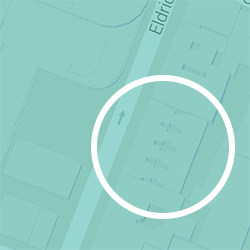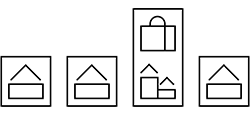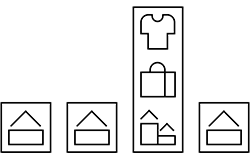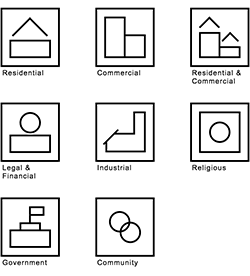Orchard Street
Hester Street
Grand Street
Resilience: Tracking A Neighborhood On the Rise.
From the dim-sum rush to the mah-jong game in the park, New York ’s Chinatown is a place all its own.
A NEW CHINATOWN
To a portion of the city’s immigrant population, Chinatown seems like a home away from home—a place where one could have the opportunity to reinvent under the watchful guidance of their peers and away from the inklings of discrimination existing beyond its borders. At the forefront of this largely, self-supporting, comunity’s growth is an internal structure of family associations and community organizations that each serve to provide “jobs, economic aid, social service, and protection [A].” Similarly, provisions for the community can also extend to the citizens themselves as they are driven to create businesses that serves not to satisfy the populous, but the residents of Chinatown. It is through this patchwork-like proliferation of mom and pop variety stores, peking duck restaurants, and herbal shops, that the pursuit has come to life and has now become part of a widespread vision of the area that even transcends state boundaries.
However with negotiations against new zoning regulations gone awry, the exact definition of Chinatown seems to be shifting. Evictions and rising rents are beginning to cast a shadow on the neighborhood in the form of “big property values [of] little character [B].” Proposed rezoning regulations offer a way to fight this shift, but the follow-through of such an initiative on behalf of the community is often shaky. What then becomes of local vendors and affordable housing?
“All is not lost yet [B].” The rise of cultural preservation in the conversation of development is driving a new way to look at changing Chinatown for the better. Rooted in the idea of preservation is the notion of informed policy especially in areas where associations who still own whole buildings full of overseas residents. Further rooted in the idea of informed policy is the notion of ethnic bonds which are primary in setting the area apart from an enclave and into a home. It is the hope of many that those who have to means to exact on big decisions have this in their minds as contracts are being signed.
ANALYZING SPACE THROUGH SPACE
In a New York Magazine article entitled “How has Chinatown Stayed Chinatown?”[E] Wellington Chen, the director of Chinatown’s Business Improvement District, speaks about the shift:
“...an overwhelming number of empty storefronts being filled by independent pharmacies. At the same time, senior and adult day-care centers have been proliferating-starting with a 19,000 square foot building the city has installed on Centre Street. ...it’s a subtle indication of a trend: As so many immigrants’ children have left for college and never returned, and as other families have sought real estate in outer boroughs (particularly in Sunset Park, Brooklyn, and Flushing, Queens), most of the people left in Chinatown’s historic are the elderly dwellers of rent-regulated apartments.”
With changes already under way, this alphabet is meant to provide a means to record such shifts through the language of space. A resource of sorts that talks about space with the language of space in order to ask questions pertaining to Chinatown in perspective. What sorts of spaces are opening up? What sorts of spaces are closing down? Which spaces are in excess?
PROCESS & READING THE ALPHABET
Maps use line to manifest forms of wayfinding: streets, buildings, & etc. Interestingly enough in the process of creating these forms, lines may also give a light inclination of what may be a specific area's characteristics.

In this close-up image of a map, some consistency in form implies that four buildings belong with each other in some way. They may be developed by the same construction company or owned by one figure. Knowing this, the alphabet can illustrate this specific area using the symbol for OCCUPIED as a stand in:

It can also be inferrred that the buildings may have balconies, or courtyards of some sort through the cross-like shape they form at their center. Therefore, it can be noted that they may be part of a residential complex of some sort. The symbol for a RESIDENTIAL lot may then be added to the four occupied lots.

But, what if one of the buildings also leases out a COMMERCIAL space on its street level property?

But what if this company is a RETAIL store?

But what if this retail store sells CLOTHING?

In this way, we can begin to track the growth of spaces in Chinatown to test different hypotheses about the recent developments in the area.
ALPHABET AS CASE STUDY
To illustrate the applications of this alphabet, we can use Orchard Street as a case study.
On the left hand side of the screen, a snapshot of
Chinatown's extent of Orchard Street is displayed
using the alphabet. More specifically, this includes the
extent of Orchard Street from Grand Street to Division Street,
passing by Hester Street and Canal Street.
One thing important thing to distinguish in this area
is the amount of commercial mix-used (both residential and commercial ) spaces,
particularly galleries.
Another thing to note about this area is at its end, are two
community centers which are actually
adult day care centers. More than anything, this sets the tone
of what sort of population Chinatown is now made up of.
Combined with the idea that this particular street is centered around
galleries, one can come up with the conclusion that this
location is largely residential, and may not have as much traffic as
a location with more open markets and shops.
BIBLIOGRAPHY
ALPHABET GUIDE
STATUS:

PURPOSE:

SCALE:

PERSONALITY:

